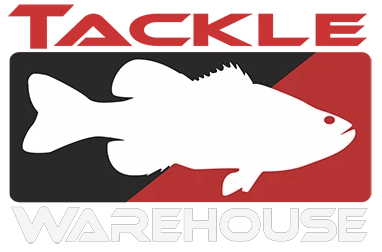Todd Driscoll TP&WD Fisheries Biologist Summer Fish Care Article with Links to O2 Injection System Specs
Livewell-Held Bass Require Special Care During Summer Months
Todd Driscoll
TPWD
The popularity of bass fishing has exploded during the last 20 years. During this time many changes have taken place, including increases in fishing technology and the advent of more restrictive harvest regulations. However, one of the most important changes includes increased angler acceptance of catch and release practices. There is no doubt that the popularity of catch and release has helped sustain and enhance bass fisheries throughout the country. Currently, almost all bass tournaments require release of all live fish weighed in and penalize those with dead bass. In addition, conservation of the resource should be a major consideration of all tournament anglers. Therefore, tournament anglers should do everything possible to ensure survival of released fish. By following the guidelines below, anglers can minimize stress on bass while held in livewells. (click below to read more)
All recommendations are based on water temperature, oxygen, and proper handling of fish. Stress in the livewell occurs as a result of low oxygen levels. As water temperatures increase, water holds less oxygen and bass consume more oxygen. This implies that as the water temperatures increase, fish in a livewell require more attention and care in order to reduce stress.
When water temperatures are below 75 degrees, at a minimum anglers should run either the recirculating (aerating) pump or intake pump at timed intervals. These timers should be set to run as often as possible. By recirculating water, uniodized salt can be added to livewell water (1/3 cup per 5 gallons of water) to match the body fluid salt concentration of bass (0.5%). Fish experiencing stress absorb excess water while in the livewell, diluting body fluids below levels necessary for survival. Maintaining the salinity of livewell water to that of fish body fluids minimizes effects of stress. Pre-measured amounts of salt can be carried in ziplock bags. Commercial water conditioners (i.e., catch and release formulas) cannot be recommended by state fisheries agencies because the ingredients have not been tested by the U.S. Food and Drug Administration as safe for human consumption. Note that pumping fresh water in instead of running a recirculating pump prevents use of salt additives (simply due to dilution). Ideally, anglers should run either recirculating or intake pumps continuously to ensure optimal livewell conditions, especially if there is more than 10 pounds of bass in the livewell. Adequate, fully charged boat batteries should have no problem providing continuous power to the pumps.
When water temperatures are above 75 degrees, anglers should run their recirculating pumps continuously and add proper amounts of ice and uniodized salt to keep fish in the best shape possible. For boats equipped only with timer-operated pumps, the switches should be replaced to allow the pumps to operate in continuous mode. Again, at these temperatures, running pumps on a timer does not maintain adequate oxygen levels in livewells. Cooling the livewell water with ice allows it to hold more oxygen and reduces oxygen consumption by bass. Enough ice needs to be added to reduce the livewell temperature 5-10 degrees below reservoir surface temperature. Excessive cooling beyond 10 degrees can cause heat shock when bass are released back into the lake. Block ice is preferred (it lasts longer) and can be made by freezing water in half-gallon milk jugs or 12-ounce water bottles. As a rule, 8 pounds of ice will cool the typical livewell 5-10 degrees for 3 hours. A frozen, half-gallon milk jug will weigh 4 pounds. During a typical tournament day (8-9 hours), 8 pounds of ice added every 3 hours when water is exchanged should maintain a cooler livewell temperature. Thermometers are a must to insure water is not cooled more than 10 degrees. Thermometers used to measure vehicle air conditioning work well and can be purchased at auto stores. Nearly all GPS/sonar units can support additional temperature sensors that can be permanently mounted in livewells. Here, ability to plot both livewell temperatures and the lake surface temperature on the GPS/sonar screen allows for continuous monitoring and adjustment of livewell temperatures.
To maintain livewell-held bass in the best possible shape, pure oxygen-injection systems (oxygen bottle, regulator, and fine-pore air diffuser) can be installed for under $300. Without question, lack of oxygen is the primary reason fish die in livewells. During the most extreme conditions (i.e., 15 + pounds of bass in a livewell over 85 degrees), these oxygen-injection systems are the only way to maintain optimum oxygen levels. I have this system installed in my bass boat, and would be happy to display and discuss this equipment with anyone that is interested. A Texas Parks and Wildlife Department presentation on these oxygen systems can be found at this web link: http://www.slideshare.net/raminlandfish/livewell-oxygen-injection-8773301
Even with appropriate care, some fish will die due to deep-hooking, internal organ injury, and blood loss. Dead fish will cause poor water quality conditions in the livewell and should be removed immediately and placed on ice. However, as required by game laws in most states, dead fish must be retained as part of your daily limit. It is illegal to cull dead fish.
The weigh-in is an additional stress factor. The most important thing anglers can do during this time is to not carry bass in dry bags from the boat to the holding tanks. As simple as this sounds, it is surprising how many anglers do not take the time to get enough water in the bags to prevent stress during the time the fish are put into the bag until they reach the life-support tanks or scales. Fill your weigh-in bag with at least 4 gallons of water from your livewell, especially if you have been using ice to cool the livewell water. Holding tanks at the weigh-in line should be aerated, cooled with ice, and treated with salt. Effort should be taken while in the line to exchange the original water in the bag with the aerated, treated water in the tanks and to keep your bag submerged in the holding tanks. Many tournaments now have multiple air stones in each holding tank for placement inside your weigh-in bag. Oxygenating your water in the weigh-in bag while in line is absolutely critical, as oxygen in the weigh-in bag can drop to zero in just a couple of minutes!
If fish are held for pictures, wet hands before touching fish. Grasp fish by the lower jaw but never bend the head down or hold horizontally by jaw. Avoid touching the body of the fish as this removes the protective mucous covering. When holding bigger fish, the lower body should also be supported with a wet hand under the belly to prevent jaw damage. Do not keep fish out of water any longer than you can hold your breath. Air exposure is extremely stressful to fish.
Much of the fish care information in this article was summarized from the B.A.S.S. publication Keeping Bass Alive by Gene Gilliland and Hal Schramm.
Livewell Components for Oxygen-Injection System
Oxygen regulator
Cramer Decker Medical
http://www.cramerdeckermedical.com/product.php?product_id=583
CGA540, 0-4 LPM, Barb only - $41
OR
Premier Industries (https://premierind.us/)
4700 Series Livewell Regulator – 763-786-4020
The Cramer Decker regulator is adjustable. Set it on 1/8 LPM under all conditions.
The Premier Industries regulator was built specifically for boat livewells, and the flow is non-adjustable and fixed at 0.1 LPM.
Oxygen cylinder
Can simply rent a steel cylinder from your local gas supplier.
I prefer to purchase the lighter, aluminum medical-grade version:
Cramer Decker Medical
http://www.cramerdeckermedical.com/product.php?product_id=223
MD Aluminum Oxygen Bottle w/ CGA540 valve – $72
The CGA540 valve permits use and refill with welding-grade oxygen. If using the aluminum cylinder, specify refill with welding-grade oxygen. Medical-grade oxygen is simply filtered better and is not needed for boat livewell use.
Oxygen diffusers, hose, and misc.
Pentair-Aquatic Ecosystems (https://pentairaes.com)
Oxygen diffuser – Sweetwater DYPFP4 - $36 each
https://pentairaes.com/sweetwater-air-diffusers-flat-ceramic.html
Need two diffusers (one for each livewell). If starboard and port livewells are joined as one (separated by baffle with water flow between) two diffusers are still required for adequate oxygen distribution.
¼” ID vinyl tubing – TVR40 (50-ft roll) - $30
https://pentairaes.com/vinyl-reinforced-clear-tubing.html
Plastic tee – ¼-inch barb - 62064 - $1
https://pentairaes.com/tubing-adapters.html
6 – stainless steel hose clamps ¼” (SSAA) $7
https://pentairaes.com/stainless-steel-hose-clamps.html
Be sure that oxygen cylinder is secure after installation and protected from vibration and impact. If needed, a fire extinguisher bracket and hose clamps can be used to mount bottle.
Oxygen flow will follow the path of least resistance. To ensure equal flow to both livewells, cut hoses to equal length running to each livewell from the tee, and be sure both livewells are full of water to equalize pressure. If only one livewell is full, most of the oxygen will flow to the empty livewell since that is the path of least resistance.









